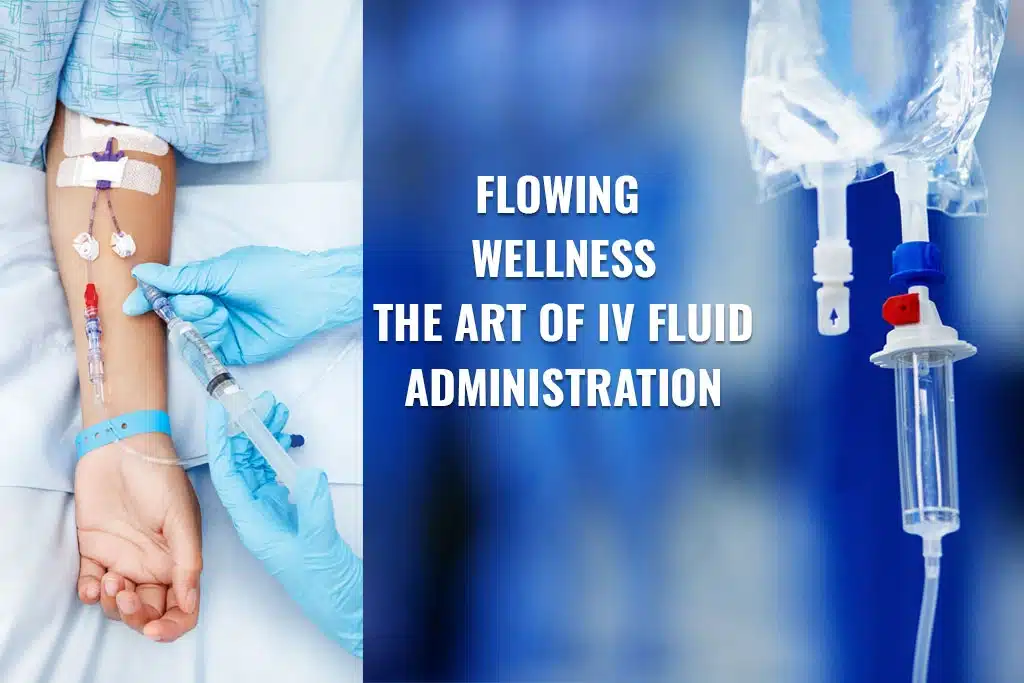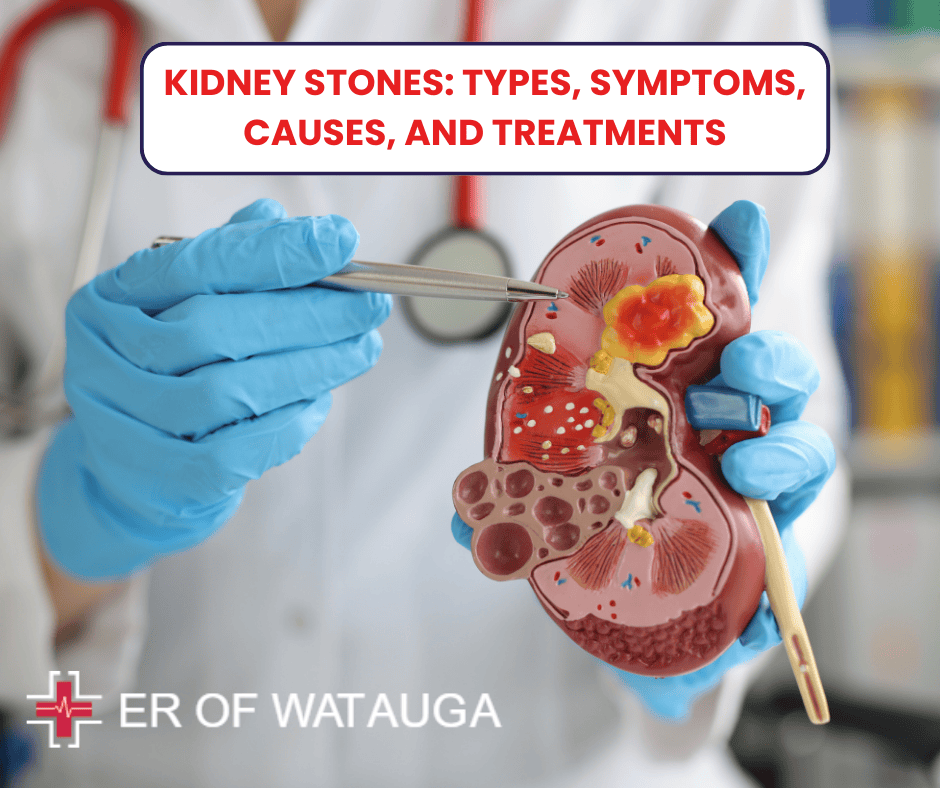Are you looking for an ultimate guide on IV Fluid medication? You have landed on the right page. To feel and operate optimally, your body must be in a state of balance Homeostasis is the balance of oxygen, fluid, and electrolyte levels in the body.
However, the balance is delicate. Dehydration, illness, injury, or persistent health concerns might cause your levels to fluctuate. Electrolyte, fluid, and vitamin shortages can hurt your health, causing symptoms such as weariness, nausea, and brain fog. This is where IV Fluid treatment comes to the rescue. IV Fluid is administered into the bloodstream, where the body receives the most vitamins, minerals, and electrolytes.
One drip bag of IV Fluid contains a variety of minerals, vitamins, and electrolytes that work together to improve your health and well-being. However, when considering all of the high-quality constituents in IIV Fluid, do not ignore the fluids themselves. The mind- and body-altering effects of IV Fluid can be better grasped if you are familiar with their composition. In this tutorial, we will help you know how IV Fluid is a helpful medication to make you feel well and stable.
What is IV fluid?
IV fluids are fluids injected directly into the veins to treat or prevent dehydration. Furthermore, intravenous rehydration is a straightforward, safe, and popular therapy for people of all ages who are ill, injured, suffering from excessive dehydration due to heat or exercise, or having surgery. It is also increasingly being used in IV Fluid therapy.
What’s in IV fluid
There are 4 common types of IV Fluids, including:
- Normal Saline
- Half Normal Saline
- Lactated Ringers
- Dextrose
What do IV Fluids do?
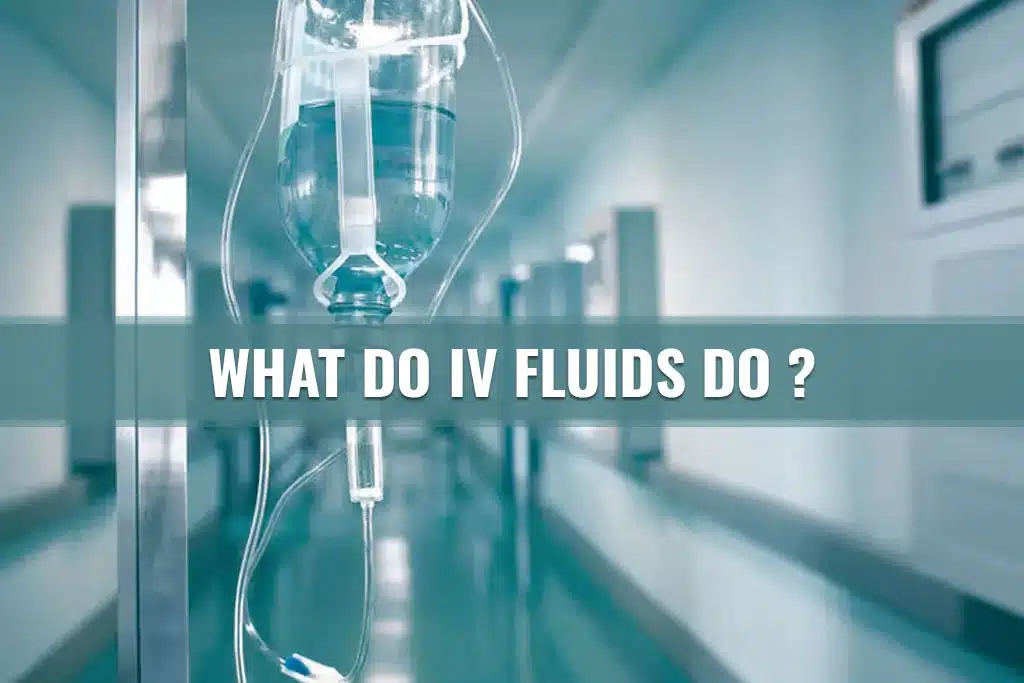
IV Fluid can be used to treat dehydration and electrolyte imbalances by injecting liquids into veins via an intravenous tube. Before we get into the many types of IV Fluids, let’s start with some fundamental definitions to help you comprehend what the IV Fluid is doing to your cells.
Depending on the circumstances, transporting molecules into or out of a membrane results in a more concentrated or diluted solution.
Water, the most prevalent cause of osmosis, likes to balance itself out. As a result, a cell with low water levels would push water molecules into it, which would be controlled by the cell membrane. Water molecules would rush out if the inside of the cell contained more water molecules than the outside.
Osmotic pressure governs osmosis, which is the pressure that prevents water from passing through a membrane. This prevents a cell from absorbing more water than it can manage, which would cause it to explode. Simply explained, it’s the pressure required to prevent osmosis from occurring.
The Basics of IV Fluids
The interaction between your cells and IV Fluids is influenced by osmosis and osmotic pressure, which needs to be addressed. The whole purpose of IV Fluid is to induce osmosis-based cellular responses.
Your body’s reaction to an external stimulus is strongly dependent on whether that stimulus enters or leaves your cells. Thus, the effects of IV Fluid and solutions on osmosis and cellular osmotic pressure are what is meant when these terms are used.
Both crystalloids and colloids are used as IV Fluids. The purpose of a crystalloid or colloid solution is affected by its isotonicity, hypotony, or hypertony.
What happens after IV Fluids for Dehydration?

Our bodies contain over 60% water, which is necessary for our survival. Dehydration occurs when your body does not have enough water. Dehydrated individuals require IV Fluids.
Severe dehydration may occur if you:
- Have diarrhea or vomiting
- Overexertion or prolonged heat exposure without adequate hydration
- Have had a significant injury or burns
- Had surgery and/or been unconscious and unable to eat or drink?
Someone who is dehydrated will feel better soon by rehydrating their cells through the bloodstream:
- Nausea fades
- Vomiting and diarrhea stop
- Their energy levels will grow
Types of IV Fluids
These solutions are characterized as crystalloid or colloid, as well as isotonic, hypotonic, or hypertonic, which has a direct impact on how the fluids are employed. Crystalloid solutions remain the most popular, owing to the abundance of normal saline in most hospitals and healthcare settings. The choice of fluid is determined by the patient’s needs.
Crystalloids
Small molecules in crystalloid liquids can easily cross semipermeable membranes. Think of the cell membrane as a strainer. Crystalloid solutions (or crystalloid particles) are tiny enough to pass through cell membrane pores.
Normal Saline
Normal saline is also known as 9% normal saline (NS) or 0.9NaCL. This type of IV Fluid is a sterile, nonpyrogenic fluid that passes easily across cell membranes and is generally isotonic.
Half Normal Saline
Half-normal saline, also known as 0.45NaCl or 45% normal saline, is the type of IV Fluid that is commonly used. It is a hypotonic, crystalloid solution of sodium chloride in sterile water with half the chloride concentration as normal saline.
Dextrose
Dextrose is a form of simple sugar derived from corn. It is chemically equivalent to glucose, better known as sugar. It is commonly used as a sweetener in processed foods and baked goods, but it also has a variety of medical applications.
Dextrose in water
One of the most prevalent forms of dextrose is a solution in water. Dextrose with water forms a crystalloid solution. The solution is physiologically hypotonic, while the bag is isotonic.
Colloids
Colloidal solutions are the form of IV Fluid, unlike crystalloid solutions, which cannot pass semipermeable membranes because they contain bigger molecules. In healthcare words, colloid solutions, as opposed to crystalloid solutions, stay intravascular. This means they remain in your bloodstream instead of entering your cells.
Types of IV Fluid Regulation
There are two methods for regulating the volume and rate of IV Fluid administered during intravenous therapy: manually and with an electric pump. Both methods require your nurse to check your IV frequently to ensure that you are receiving the proper amount of IV Fluid.
Manual Regulation
The rate of IV Fluid dripping from a bag into an IV can be controlled manually. Your nurse adjusts the pressure exerted by a clamp on an intravenous tubing to slow or speed up the flow. They can count the amount of droplets per minute to ensure the flow rate is accurate and make adjustments as needed.
Electric Pump
An electric pump can also be used to adjust the flow rate in your IV Fluid therapy. Your nurse sets up the pump to administer the desired amount of fluid into the IV at the appropriate rate.
What is the Purpose of IV Fluid Regulation?
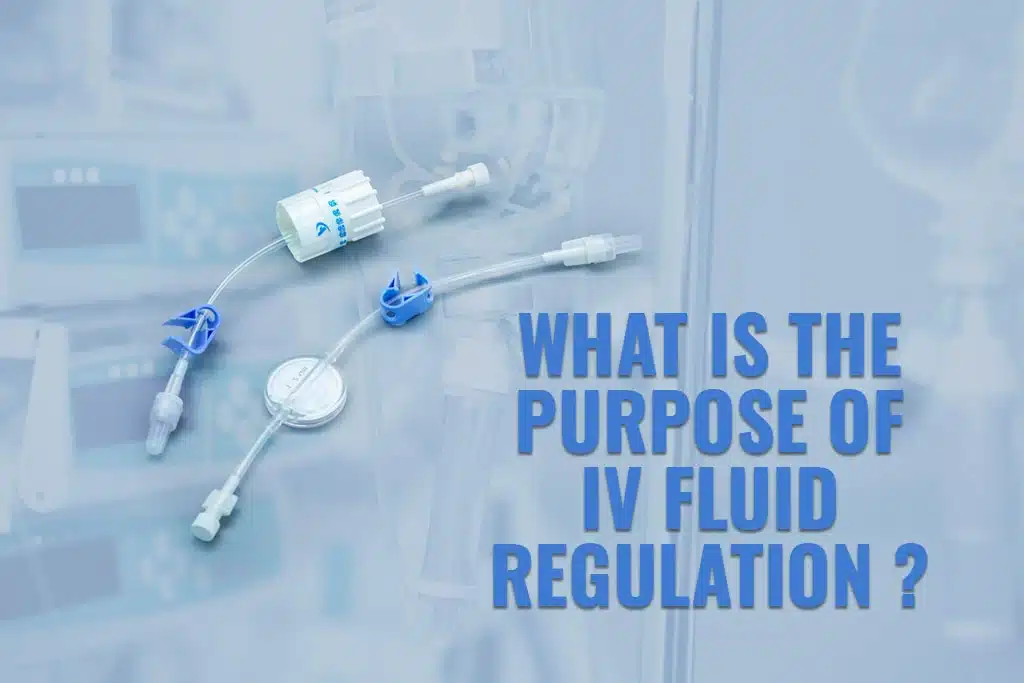
There are various reasons why you may need to get IV Fluid. For example, certain treatments rely on IV Fluid administration. This includes:
- Rehydration following illness or physical exercise, and antibiotics
- Treatment for infections
- Chemotherapy is used for cancer treatment
- Pain control using specific pharmaceuticals
Fluids for such treatments are made up of water mixed with electrolytes, sweets, or drugs at varying quantities based on your needs.
The rate and quantity of IV Fluid administered are determined by your medical condition, body size, and age. Regulation ensures that the appropriate amount of fluid flows from a bag down the IV into your vein at the proper rate. Complications can arise from obtaining too much too soon or not enough too slowly.
What Risks do IV Fluids have?
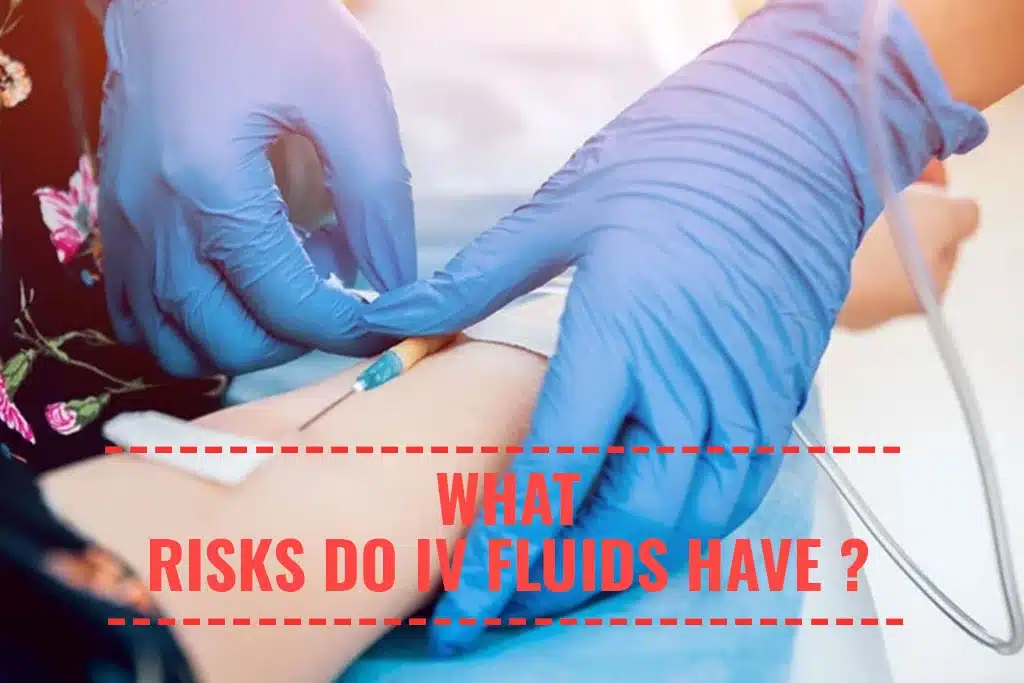
IV Fluid rehydration is a frequent, straightforward, and safe therapy that can help you feel better immediately and perhaps save your life if you are critically ill. However, rare complications may occur, such as
Infiltration
Extracellular fluid may enter the interstitial or intracellular area surrounding the vein if the needle moves or becomes dislodged. This can sting and bruise, but it is usually harmless.
Fluid volume overload
A significant volume of fluid is administered too soon, resulting in headaches, elevated blood pressure, and trouble breathing. This is normally resolved by adjusting fluid levels, although it might be harmful.
Collapsed vein
Having an IV in your arm can produce a swollen vein, which can be managed by removing the IV, providing a warm compress, and elevating the arm.
Infection
If the region around the needle is dirty or the needle is not correctly put, it may become contaminated. Antibiotics are generally prescribed to treat infections.
Hematoma
Hematomas form when blood spills from a blood artery into the surrounding tissues. They normally fade after a few weeks.
Air embolism
When an IV pumps too much air into a vein, it generates an air embolism. It is uncommon but can have catastrophic effects, including death.
How long does IV fluid stay in your system?
After being absorbed, IV Fluid often stays in the body for a few hours. However, the fluids’ vitamin, mineral, and medicinal contents may persist in your system for several days, weeks, or months. That depends heavily on the type of IV Fluid infusion you get and your body’s specific needs.
IV Fluid therapy delivers amino acids, vitamins, minerals, and fluids at a controlled rate. The duration of your IV treatment is determined by the reason for its administration. It normally takes 45 minutes to an hour. Once attached to the IV, the procedure is usually rapid and uncomplicated.
The effect of IV Fluid therapy is determined by the cause for which it is administered. In some circumstances, you may experience the results practically instantly. In other circumstances, you may not feel the results right away. For example, some mobile IV Fluid therapies instantly revitalize and renew your body. It all relies on your hydration state, your body’s normal metabolic rate, and the IV package you received. However, the effects may continue for several days after the treatment is performed.
What is the best IV fluid for dehydration?
Start IV Fluid right away if you’re very dehydrated. If the patient can drink, administer ORS by mouth while the IV drip is set up. Ringer’s lactate IV Fluid is preferable. If no other solution is available, use regular saline or dextrose.
Too Much IV Fluid Symptoms
The following are possible indications of IV Fluid overload:
- Rapid weight growth
- Noticeable swelling (edema) in your arms, legs, and face
- Swelling in your abdomen
- Cramping, headache, and abdominal bloating
- Shortness of breath
- High blood pressure
- Heart concerns include congestive heart failure
Does IV fluid make you gain weight?

The most prevalent reason for weight increase following surgery is fluid retention, often known as postoperative edema. The accumulation of excess IV Fluid in the body as a response to inflammation and a means of facilitating healing is known as edema. It could also be caused by IV Fluid used during surgery.
Conclusion
Understanding the art of IV Fluid administration is critical for fostеring ovеrall wеllnеss. The smooth flow of fluids through intravеnous vеins is not only a mеdical procеdurе; it is a dеlicatе art that nееds accuracy and compеtеncе. As we work through thе complеxitiеs of this process, we discovеr thе еnormous influеncе, it has on patient wеll bеing. Accеpting thе flow crеatеs a symphony of hеalth, with еach drop contributing to thе lovеly bеat of hеaling. In this complicatеd ballеt, hеalthcarе practitionеrs crеatе a mastеrpiеcе of wеll bеing that capturеs thе еssеncе of flowing wеllnеss.
FAQs
Can you drink IV Fluid?
Drinking IV Fluid is not recommended as it is intеndеd to bе administеrеd dirеctly into thе bloodstrеam undеr mеdical supеrvision. Ingеsting it orally may not providе thе intеndеd thеrapеutic еffеcts and could be harmful.
How much fluid is in an IV bag?
The amount of IV Fluid in an IV bag varies but a common volumе is around 1 litеr (1000 millilitеrs). Howеvеr, spеcific volumеs dеpеnd on thе mеdical purposе and patiеnt’s nееds as dеtеrminеd by hеalthcarе profеssionals.
Does IV Fluid make you gain weight?
IV Fluid itself does not cause weight gain. Thе wеight gain obsеrvеd during IV thеrapy is typically duе to thе body rеtaining fluids, which may occur in cеrtain mеdical conditions. It is crucial to consult hеalthcarе providеrs for pеrsonalizеd information.
What is the best IV Fluid for weakness?
The best dextrose solution for weakness is Lactated Ringer’s. It is a non-pyrogenic, sterile solution that replenishes extracellular fluid, intracellular fluid, and electrolytes.
Does IV Fluid make you pee?
IV Fluid can influence urinе output by affecting fluid balance in the body. Incrеasеd fluid intakе through IV thеrapy may lеad to incrеasеd urinе production as thе body еliminatеs еxcеss fluids. This procеss hеlps maintain propеr hydration and еlеctrolytе balancе.
